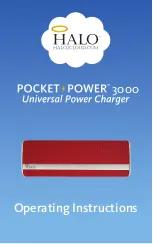
INCORPORATED
®
General Information
ITC-Series
Inverter
Page 29
Owner’s Manual 8/5/17
and the "house or auxiliary battery" respectively. The two separate batteries are usually charged from the same
source, the engine alternator, but are separated by a device called a battery isolator. The battery isolator allows
DC current to flow from the alternator into each battery, but blocks current from flowing from one battery to the
other. This is required to protect the cranking battery in recreation vehicles, boats and other vehicles where the
inverter needs to be operated when the engine (therefore the alternator) is not running.
Battery Charging Guidelines
CAUTION
The following information on battery charger setup adjustments should be used as guidelines only. Vanner
strongly recommends that you contact the manufacturer of your batteries to obtain the specific charging
setup values for the type and model of battery you are using. This is because battery charging parameters
such as bulk, absorption, float and equalize voltages vary from one manufacturer to another, and that gel cell
batteries have different parameters than wet lead acid batteries. An improperly adjusted battery charger
may cause damage to your batteries!
The maximum charging current for a battery is usually equal to 20% of the battery's Amp hour capacity (“C
Rating”) for lead acid batteries, and 50% of the battery's C for gel cell batteries. The C rate is numerically equal
to the amp-hour capacity for the battery. For example, a 280 amp-hour battery has a C rate of 280 amps, and
the maximum charge rate would be 56 amps DC. (Note that this is not the same as the battery's Cold Cranking
Amp rating.) It is important to also take into consideration that if two batteries are connected in parallel, their
amp-hours add, while batteries that are connected in series have the same amp hours as a single battery since
they are simply stacked for more voltage. Remember, paralleled = more current; stacked = more voltage.




































